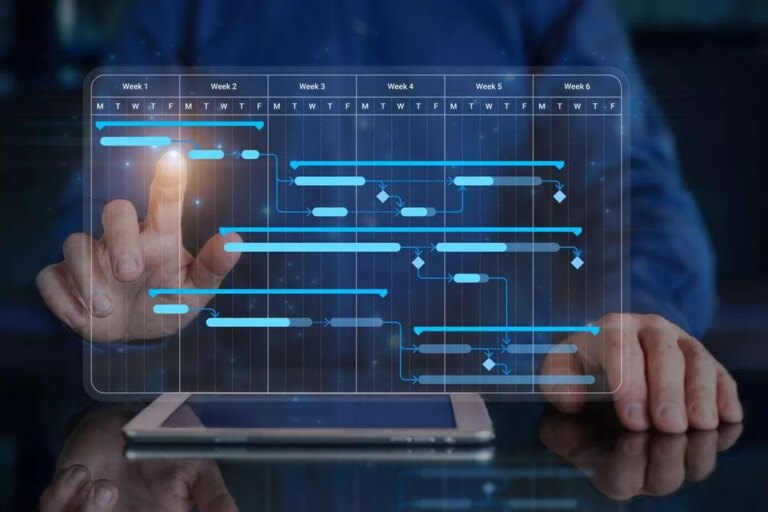As a case study, we apply these rules to changes in the requirements specification for Course Management System. The release of traces for traceability use and the changes that occur during traceability maintenance. Traceability configuration management depends upon traceability version control. Traceability creation The general activity of associating two (or more) arti- facts, by providing trace links between them, for tracing purposes. Note that this could be done manually, automatically or semi-automatically, and additional annotations can be provided as desired to characterize attributes of the traces. Traceability decay The gradual disintegration and break down of the traceabil- ity on a project.

The product cannot be sterilized with current standard methods, so that issues of microbiological contamination are of great concern. When cells move between people or sites, being able to prove that recipients are not at risk from infection with communicable diseases is a particular challenge. Therefore, regulatory agencies believe that close scrutiny is required and the need for traceability is very high.
Steps to review Baseline Schedule (P
Their metamodel includes tracing and monitoring concepts similar to those in the present study, but is dependent on the type of representation selected for the concepts (UMLDiagram and ClassDiagram, for example). However, this proposal focuses exclusively on change impact analysis, ignoring other traceability-related practices. A more recent literature review was carried out by Tufail et al. (2017). This review focused on requirements traceability techniques, models, and tools, offering detailed analysis and comparison and providing a set of comparative tables. It distinguished, among other things, between traceability metamodels, traceability process models and traceability information models.

However, traceability implementation in industrial projects is limited for fear of the overheads it may involve. In practice, traceability often implies a qualitative improvement, but one which is usually difficult to measure. The difficulty of comparing software development with and without traceability management under almost identical conditions is also the main reason for the lack of systematic evaluations regarding traceability return on investment (ROI). Quality management and quality assurance vertical traceability are among the issues that value chains must address. This article has focused on these in the context of the manufacturing workplace and described an item traceability solution that delivers a high level of traceability. The ETL function deals with production and quality management information from the plant that is collected in the primary data mart on the data platform, converting this information and storing it in the secondary data mart in a form that can be used for item traceability.
One thought on “W8_Andi_Schedule Traceability”
Typically these records are maintained in binders or folders which quickly accumulate and sourcing can take hours, if not days, depending on the efficiency of the record-keeping system in place and the resources dedicated to the task. Horizontal tracing may employ both forward tracing and backward tracing .
These artefacts may sacrifice uncertainties, resolution or range of force measurement, in exchange for cost reductions, portability or compliance with other physical constraints, such as size or environmental tolerance. If the project is checked again or the project is closed, an error message will be displayed indicating that some information was lost for TestUIStep(s). The trace rule establishes that for each UIStep there has to be at least one TestUIStep. When this happens, the user could automatically navigate to a support panel that helps them to find and understand the error and to solve it. The quality control plug-in verifies that each Change is performed according to the TraceRule(s); it also generates Error(s) and Warning(s). If an inconsistency is detected, a message is sent to the developer with a recommendation to re-execute or update the transformations.
( Traceability
These rules have now been specifically established and hardcoded within the tool. 4 which, to aid readability, shows only a representative excerpt of models corresponding to the Software Definition phase and a limited number of relationships. Figure 4 includes Functional Requirements, Mockups, Functional Testing and IFM models. A relationship between two elements in the figure means that there is dependency between those two elements. For instance, the relationship marked with a number 5 means that the use cases are directly related to functional tests, and that a TraceLink (see Fig. 4) should exist between them. Tracking In software and systems engineering contexts, the term commonly applies to the act or process of following requirements and depends upon requirements traceability.
- Traceability reference model See traceability information model (TIM).
- The term can be construed to infer that the trace link previously existed but now is lost.
- Where link semantics are provided, they provide for a way to read†the traversal (e.g., A implements B).
- This definition of trace link implies that the link has a primary trace link direction for tracing.
- At least one TestUIStep is generated from each UIStep and at least one TestStep is generated from each Step.
- In conclusion, not only is traceability required by regulatory agencies and third-party audit standards, but it is a key component of risk management and the control of food safety and quality.
The new vertical audit reports leverage the power of the Safefood 360° system and allow these actions to be complete within a matter of seconds. When internal audits are being conducted, this means time is spent on an activity that is non-value adding and could be applied elsewhere within the organization for a greater benefit. During a GFSI audit, the time available to produce these records is limited before a nonconformance is received, for example, the BRCGS allows a maximum of 4 hours to complete this action.
This means food businesses can now access and retrieve all product and material data and demonstrate GFSI compliance 24/7 with no disruption or additional burden to their workload. Figure 2 — Overview of How Monitoring Function WorksMonitoring and delay times are specified and the time it takes for data to arrive is taken into consideration ensuring reliable notification when monitoring limits are exceeded. It ties the product to the documented and validated methods for obtaining, manufacturing, purifying, testing, storing, and administering the product. A product without these credentials is considered by the FDA to be adulterated and therefore should not be marketed. Only through rigorous documentation can evidence be considered in place to assure why any particular cell therapy can be considered safe.
If it is OK, the TestUIStep “Creation Anamnesis” is created, together with a TraceLink object that stores this relationship (denominated StepTL in Fig. 7). The same process is performed several times, depending on the loops and decisions (in this example, only twice) for each activity in the activity diagram. At first glance, this would appear to introduce a high degree of complexity, but that is not the case. Source and target metamodels define the relationship between concepts and need to be modelled only once.
Deja un comentario